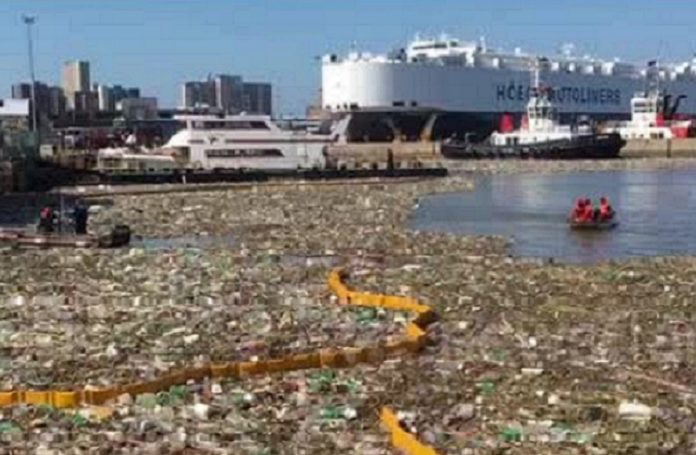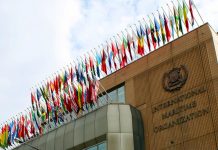
Henrik Österblom, Stockholm University
It’s a recurring question and a global problem. There is also sufficient evidence of plastic pollution on our own beaches and in our harbours. But can this scourge really be curtailed in just 10 years?
In my career as a marine biologist, I’ve been fortunate enough to visit some of the most remote islands in the world. These beautiful places continue to remind me why I have this job in the first place, but they also bring home the pervasive influence of human societies. Uninhabited bird colonies on the Canadian West Coast, remote tropical Japanese islands, and tiny bits of land in South East Asia all have one thing in common: plastic waste on the beach.
When at home in Sweden, I regularly swim and sail in the Baltic Sea. But agricultural fertilisers and other types of pollution have created dead zones where fish either leave or suffocate. Meanwhile, offshore fisheries and aquaculture farms in many parts of the world overharvest and pollute the water. We know what proper management of these activities could look like, but political will has so far not been equal to the challenge.
That may be about to change. A recent agreement between 14 heads of state – together representing 40% of the world’s coastline – promised to end overfishing, restore fish stocks and halt the flow of plastic pollution into the ocean within a decade.
Interconnected problems
Pollution, plastics and unsustainable seafood may look like isolated problems, but they influence each other. As nutrients run off farmland and into the sea, they affect the conditions fish need to thrive. Pollution makes our seafood less healthy and overfishing is pushing some fish stocks beyond their capacity to renew themselves.
All of these stresses are amplified by global warming. The ocean has been acting as a sink for CO₂ emissions and excess heat for decades, but there is only so much that marine ecosystems can take before collapsing. And we shouldn’t think these problems won’t affect us – stronger storms, fuelled by warmer ocean waters, are happening more often.
It’s in everyone’s interests to protect the ocean. Clean seas would be more profitable and research suggests that better managed fisheries could generate six times more food than they do currently. The exclusive economic zones of coastal states would be more productive if every country agreed to protect the high seas. And sailing in the Baltic Sea would be much nicer if the boat didn’t have to plough a thick, green sludge.
So how can the world make progress – and what’s holding us back?
International solutions
As part of the recent agreement between 14 heads of state, the participating countries – Australia, Canada, Chile, Fiji, Ghana, Indonesia, Jamaica, Japan, Kenya, Mexico, Namibia, Norway, Palau and Portugal – committed to a number of goals within their national waters, including investment in zero-emission shipping, eliminating waste and ensuring fisheries are sustainable. The aim is to ensure all activity within these exclusive economic zones is sustainable by 2025.
The countries agreed to fast-track their plan for action, rather than work through the UN. Their combined national waters roughly equal the size of Africa. They each have clear stakes in the continued functioning of ocean ecosystems and economies, so this pragmatic approach makes sense. That’s a sentiment that businesses could no doubt respect. After all, there are no economic opportunities in a dead ocean.
The agreement is an encouraging message from political leaders, and these states can leverage vast sums of money and resources to effect change. But the ocean is home to a dozen global industries, and around 50,000 vessels traverse it at any one time. Clearly, we need more than governments to deliver on this ambitious agenda.
My scientific colleagues and I have been developing a global coalition of businesses concerned with sustainable seafood. Our strategy is to find “keystone actors” within the private sector – companies with a disproportionate ability to influence change due to their size and strength.
The seafood industry is vast, and includes some of the largest companies in the world – from entire fisheries, to aquaculture farms and feed processors. After four years of working together, change within the participating companies is accelerating. For example, Nissui, the world’s second-largest seafood company, has evaluated their entire production portfolio for sustainability challenges.
Collaboration between scientists and businesses is vital to delivering commitments made by governments. Scientists can help define the problems, and business can develop, pilot and scale solutions. For instance, we’re developing software that can automatically detect which species of fish are caught on vessels, to radically improve the transparency of seafood production.
The ocean has been a source of inspiration, imagination and adventure since the beginning of time. It has fed us and generated livelihoods for billions. Politicians have stood serenely on the sidelines for some time now, content to be passive observers of deteriorating ecosystems. But the era of passive observation may finally be coming to an end.
Henrik Österblom, Professor of Environmental Science, Stockholm University
This article is republished from The Conversation under a Creative Commons license. Read the original article.



















